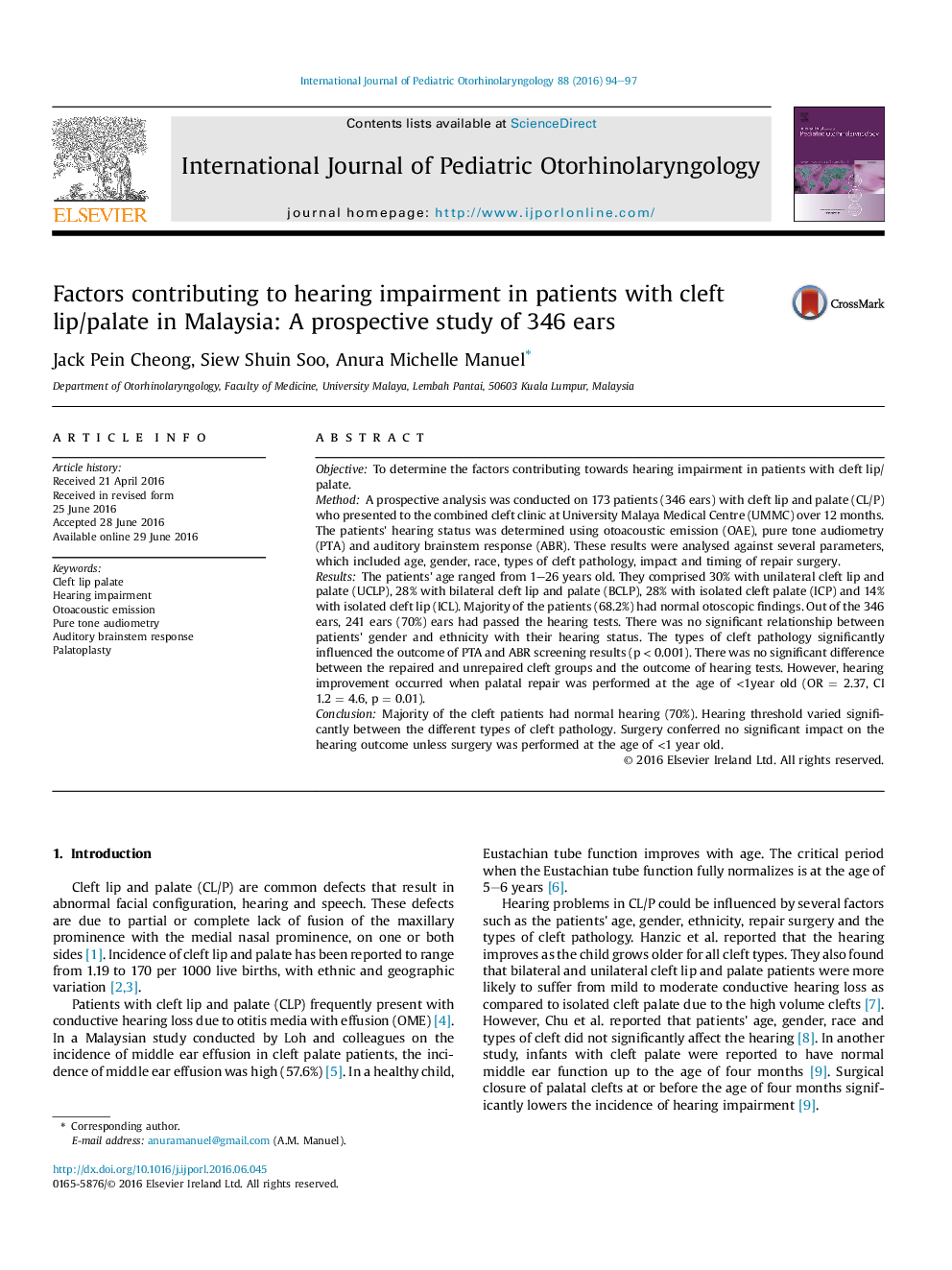| Article ID | Journal | Published Year | Pages | File Type |
|---|---|---|---|---|
| 4111394 | International Journal of Pediatric Otorhinolaryngology | 2016 | 4 Pages |
ObjectiveTo determine the factors contributing towards hearing impairment in patients with cleft lip/palate.MethodA prospective analysis was conducted on 173 patients (346 ears) with cleft lip and palate (CL/P) who presented to the combined cleft clinic at University Malaya Medical Centre (UMMC) over 12 months. The patients' hearing status was determined using otoacoustic emission (OAE), pure tone audiometry (PTA) and auditory brainstem response (ABR). These results were analysed against several parameters, which included age, gender, race, types of cleft pathology, impact and timing of repair surgery.ResultsThe patients' age ranged from 1–26 years old. They comprised 30% with unilateral cleft lip and palate (UCLP), 28% with bilateral cleft lip and palate (BCLP), 28% with isolated cleft palate (ICP) and 14% with isolated cleft lip (ICL). Majority of the patients (68.2%) had normal otoscopic findings. Out of the 346 ears, 241 ears (70%) ears had passed the hearing tests. There was no significant relationship between patients' gender and ethnicity with their hearing status. The types of cleft pathology significantly influenced the outcome of PTA and ABR screening results (p < 0.001). There was no significant difference between the repaired and unrepaired cleft groups and the outcome of hearing tests. However, hearing improvement occurred when palatal repair was performed at the age of <1year old (OR = 2.37, CI 1.2 = 4.6, p = 0.01).ConclusionMajority of the cleft patients had normal hearing (70%). Hearing threshold varied significantly between the different types of cleft pathology. Surgery conferred no significant impact on the hearing outcome unless surgery was performed at the age of <1 year old.
